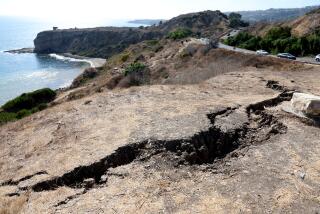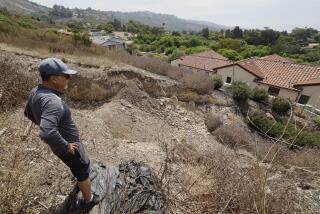DANA POINT : Residents Wail Over Edison Siren Plan
Another case of the NIMBY--Not in My Back Yard--syndrome has surfaced, this time in the hillside community of Monarch Bay Terrace.
Rather than jails or landfills, however, the object of homeowner concern is Southern California Edison Co.’s plan to install two emergency sirens. The sirens, part of the San Onofre Nuclear Generating Station warning system, were to be perched atop two 50-foot poles on Caribbean Drive until homeowners association representatives began complaining.
Both the location and the sound level of the sirens have been issues in the community that overlooks Monarch Bay and Salt Creek Beach. The association has promised to take its case to the City Council tonight.
“These sirens will be standing in front of some of our residents’ views and right at the level of our bedrooms,” said Richard Dombrow, an attorney and former president of the association. “It’s ludicrous, really. These things do not have to be placed in the middle of our neighborhood.”
The sirens would be the last of 50 devices that make up the nuclear station’s emergency-warning network. The other 48 are scattered throughout the South County area in a 10-mile radius around the generating station just south of San Clemente, according to Edison spokesman David Barron. Six sirens are located in Dana Point, he added.
The Monarch Bay Terrace location is actually outside the federally mandated emergency zone, but Dana Point officials decided to make the zone contiguous with the city borders, said Ed Knight, the city’s director of development.
“These things are about as obtrusive as a street light,” Knight said. “There’s one near City Hall that was tested last September, and it sounds like any other siren. Maybe in the subdivision right below the pole, it could rattle the tiles a little.”
The sirens are designed to be a warning to anyone within earshot to turn on their radios or televisions for further emergency information, Barron said. Dombrow questioned the need for a warning siren at all for areas very close to the nuclear plant.
“If the siren is telling us about an earthquake, we’ll already know about that,” he said. “If it’s warning us about a nuclear problem, well, it will probably be too late for us by the time we hear it.”
More to Read
Sign up for Essential California
The most important California stories and recommendations in your inbox every morning.
You may occasionally receive promotional content from the Los Angeles Times.










